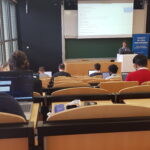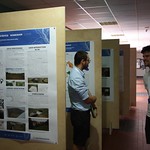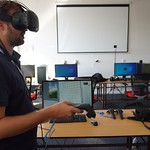6.c: Best practices guidelines for each selected functional prototype
Prepared by: Terrasigna / mundialis
Executive summary
The Geo-harmonizer project is part of a larger worldwide initiative that has as its central point the open paradigm – open software, open data, open knowledge. Published at the beginning of the project, the team prepared a thorough analysis of the already existing relevant geospatial products, accessible here.
Although, this is without a doubt highly favorable for the entire geospatial community and beyond, it can also generate the need for a more intense effort in establishing lasting connections with users and potential users that support the building of functional prototypes for use cases based on Geo-harmonizer results. Therefore, the consortium partners have been throughout the project searching and engaging with users to outline Geo-harmonizer use cases, as presented below. Because of the above mentioned reason, this activity is still ongoing and the final report will be presented within the next months.
| Use case name | Flood evolution in Europe’s river basin |
| Description | Geo-harmonizer data was used for overlapping of land cover time series with flood mask (CEMS + NDWI index time series) and other open data sets to identify the classes that have been mostly affected by flood in the last 20 years. The team has argued that the information in such a report can be the basis for various decisions taken by the INHGA and Romanian Waters |
| Users | Romanian National Institute of Hydrology and Water Management |
| Geo-harmonizer map product(s) | Land cover, CEMS flood data, time series of optical indexes (ex. Normalized Difference Water Index) |
| Geographical region (AOI) | Danube Basin |
| Use case name | Educational |
| Description | The GeoHarmonizer data was used for introduction to remote sensing classes (class code 155DPRZ) – Students were introduced to the Land Cover product created within the Geo-harmonizer project, which was downloaded by QGIS Eumap Plugin and then further used in ESA SNAP. Land Cover product for 2018 was compared with CORINE Land Cover 2018 and some basic information was given about both products. The Land Cover product was then reduced to 5 basic classes: Artificial surfaces, Agricultural areas, Forests, Semi natural areas, Water bodies (+Wetlands) and clipped by the boundary of Czech republic. Students then clipped this modified product by their chosen territory (cca 30 x 30 km, prepared in one of the previous classes) and used it as a training areas for supervised classification. In the end, the classification result and the clipped Land Cover product were compared. |
| Users | Students |
| Geo-harmonizer map product(s) | Land Cover data setANV & PNV data sets |
| Geographical region (AOI) | Czech Republic |
| Use case name | Education & Monitoring |
| Description | Ecosystem Restoration Camps is a global organisation dedicated to a bottom-up approach of ecosystem restoration projects with sites all over the world, 9 locations in Europe. These camps often include educational programs, for which data regarding the ecosystem restoration potential (such as potential for treeplanting) is an important part. However, data regarding ecosystem restoration potential is also relevant for promotional uses but more particularly for monitoring and measurement to provide proof-of-concept and validity to the Ecosystem Restoration Camps’ mission and work. |
| Users | Ecosystem Restoration Camps (Spain), individual farmers (UK) |
| Geo-harmonizer map product(s) | Tree species PNV x 16 + Tree species ANV x 16 maps |
| Geographical region (AOI) | Spain, Portugal, Italy, France, Belgium, Netherlands, UK, Ireland, Sweden |
| Use case name | Epidemiology / disease spread modelling |
| Description | Supporting spatiotemporal modeling of spread of veterinary diseases with time-series of ARD |
| Users | National and international human and veterinary public health organizations |
| Geo-harmonizer map product(s) | Landsat NDVI time-series, climatic daily temperature / rainfall, digital terrain model parameters, night light images, land-use land-cover, digital surface model, seasonal dynamics & vegetation Indices, variables related to levels and seasonality of rainfall, monthly long-term probability of snow cover, Travel Time To Major Cities, bird data, biodiversity data. |
| Geographical region (AOI) | European Union |
| Use case name | Soil monitoring for UK Soil Association |
| Description | Supporting monitoring of eight key soil health indicators: (1) Presence of soil pollutants, excess nutrients and salts; (2) Soil organic carbon stock; (3) Soil structure including soil bulk density and absence of soil sealing and erosion; (4) Soil biodiversity; (5) Soil nutrients and acidity (pH); (6) Vegetation cover; (7) Landscape heterogeneity, and (8) Forest cover. This is part of a wider EU soil strategy that has a vision that all EU soil ecosystems will be healthy by 2050. |
| Users | Individual farmers (UK) |
| Geo-harmonizer map product(s) | Landsat NDVI, EO products, soil property predictions spacetime |
| Geographical region (AOI) | UK |
| Use case name | Drought dynamics in Central Europe |
| Description | Agriculture, forestry, energy production and shipping are main industries affected by too little water |
| Users | Landesamt für Natur, Umwelt und Verbraucherschutz Nordrhein-Westfalen (LANUV) |
| Geo-harmonizer map product(s) | ERA5-Land weekly surface temperature; ERA5-Land weekly total precipitation; ERA5 Land precipitation daily sum; Topographic index (wetness index) |
| Geographical region (AOI) | Rhine catchment |
| Use case name | Landuse dynamics in Central Europe |
| Description | Urbanisation and other land-use changes severely affect soils calling for close monitoring |
| Users | Landesamt für Umwelt Rheinland-Pfalz |
| Geo-harmonizer map product(s) | Change Detection map of Germany 2016-2019 based on Sentinel-2 data; Landcover classification map of Germany 2016 based on Sentinel-2 data; Landcover classification map of Germany 2020 based on Sentinel-2 data |
| Geographical region (AOI) | Rhine catchment |
![]()







